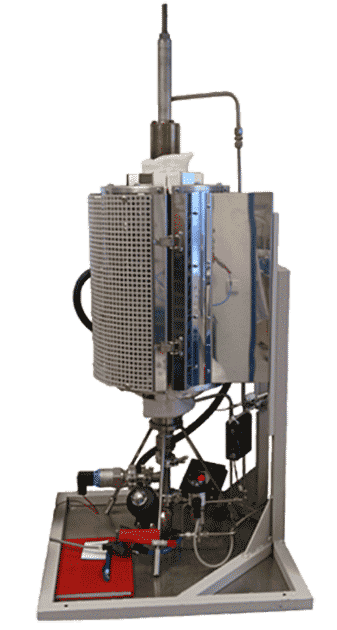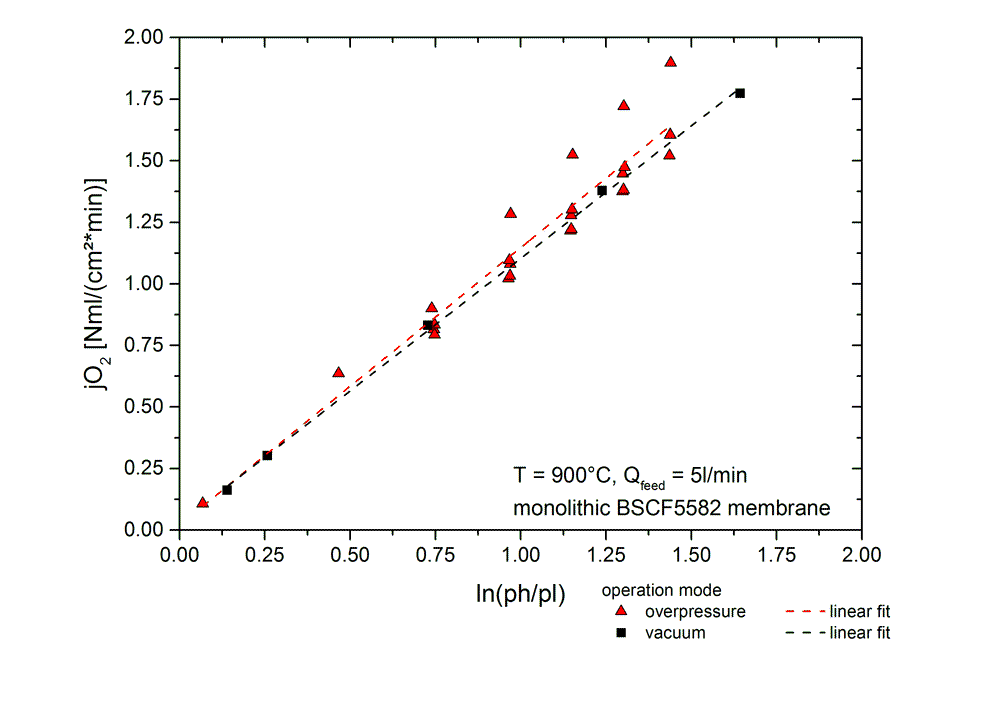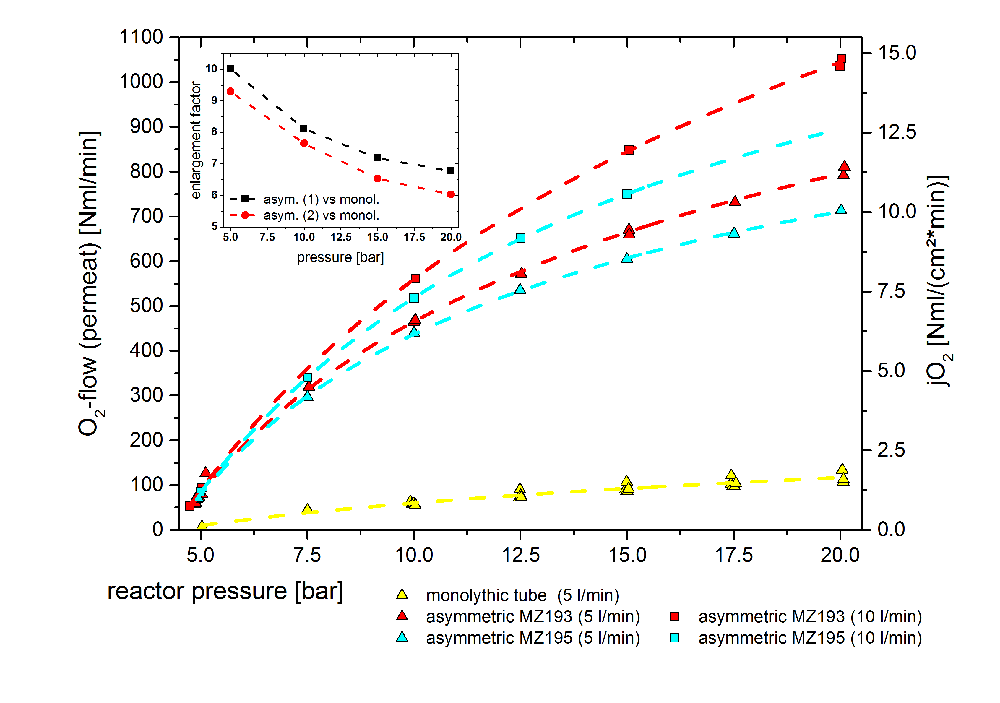


The parameters influencing the oxygen permeation in a mixed conducting membrane are given by the Wagnerian equation. In addition to the temperature and the membrane thickness the logarithmic oxygen partial pressure ratio determines the oxygen separation performance. This pressure ratio must be artificially generated. For oxygen separation using membranes mainly two modes of operation are possible. In vacuum operation, a low pressure is applied at the permeate side of the membrane (pVac <0,206 bar) and the oxygen is removed by the vacuum pump. In pressure operation the permeate side remains at ambient pressure and higher pressure is set to the feed air (pfeed > 5 bar to operate without a vacuum pump).
For characterization of mixed-conducting membranes in a high pressure and high temperature environment a special test rig was build at Fraunhofer IKTS (Fig. 1). The hot wall reactor consists of high temperature-resistant steel and can be used up to 900 °C and 20 bar. Investigations on BSCF show that these ceramic tubular membranes can be used without any problem in overpressure mode (Fig. 2 and 3).
However, for pressure applications it must be noted that expensive reactors made from special steels (hot-wall reactors) or very large reactors (cold-wall reactor) are necessary. For an energetically meaningful operation the pressure energy of the depleted feed air at the reactor outlet should be recovered (e.g. by micro turbines). Another drawback of the overpressure operation appears if pinholes exist in the membrane layer. This is caused by the fact that the leakage flow increases proportional to the absolute pressure difference but the oxygen permeation increases with the logarithmic partial pressure ratio only. Therefore, if a leaky membrane is used, vacuum operation generates typically oxygen with higher purity compared to an overpressure mode.